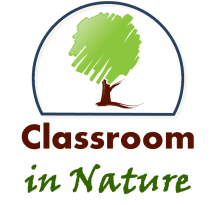Nature Discovery Area
This outdoor classroom will serve as a nature discovery area. Although this type of activity will most likely be used with younger grades (4th or 5th), it can also be used for animal, plant, and tree identification by older students (6th – 8th grades). For all students, this area can be used to talk about natural or environmental science topics, such as the water cycle, nutrient cycles, how a plant grows, the age of trees, wildlife, or other biological concepts. It would be very beneficial to connect science lessons to actual found-in-nature objects. This would help strengthen the lesson and allow the student to put in context the information.
This outdoor classroom can even be used by math instructors or for younger grade math lessons. For example, natural objects like stones, pinecones, or acorns, can be used when discussing adding, subtracting, multiplying, or division. An outdoor classroom can be used for discovery activities, which foster child development in sharing and caring for one another. For example, when a student finds a caterpillar, they can tell everyone about it and describe how they found it and explain all they see.
When a teacher brings his/her students outside, they are more “likely to encounter opportunities for decision making that stimulate problem solving and creative thinking” (Burdette & Whitaker, 2005, p. 48). This is because there is less structure in the outdoors. When inside a classroom, there are four walls, a ceiling, a floor, a few windows, a door, and some decorations. The environment is not as stimulating as a natural landscape. By having a classroom outdoors, the open space may allow for students to think more freely and even develop better problem solving skills because of the greater opportunities for hands-on activity.

